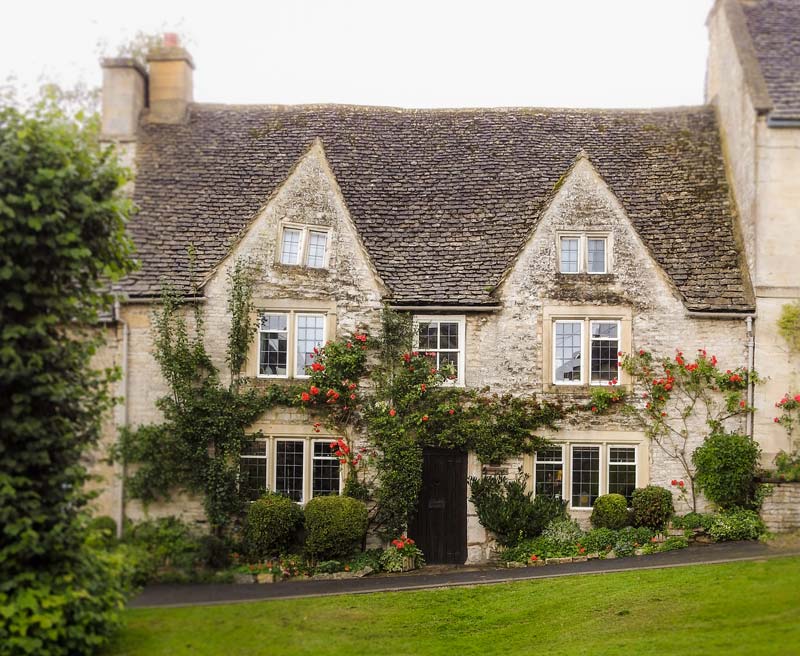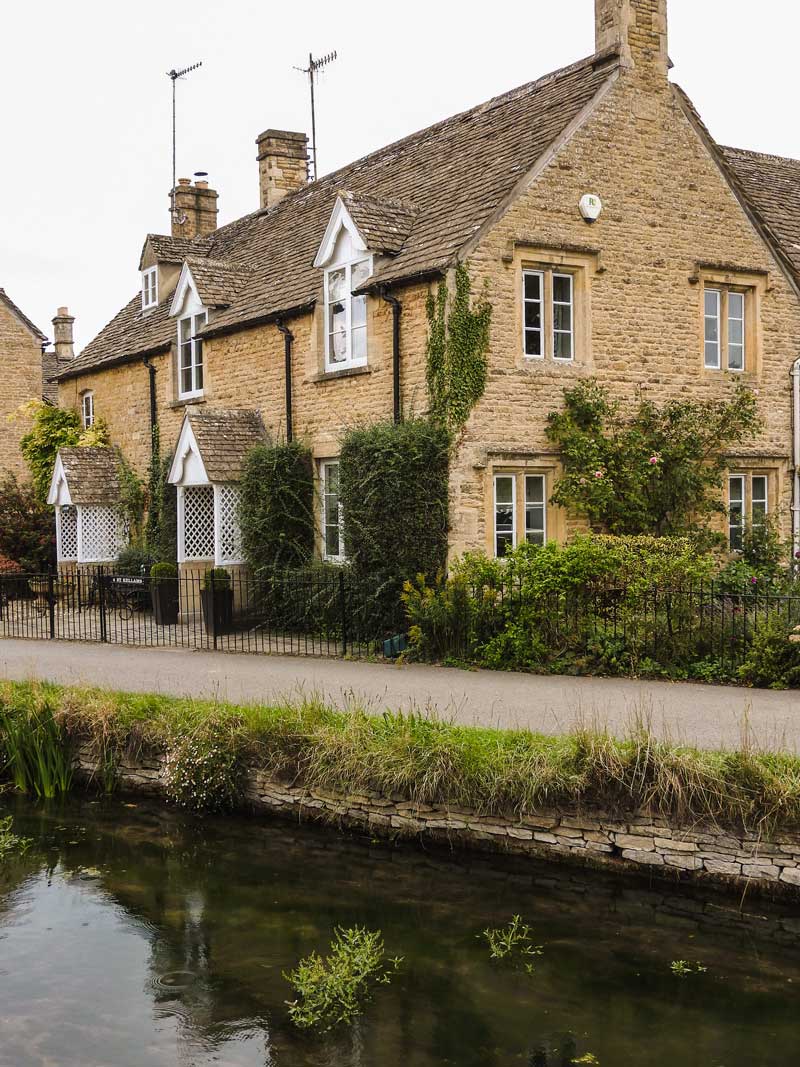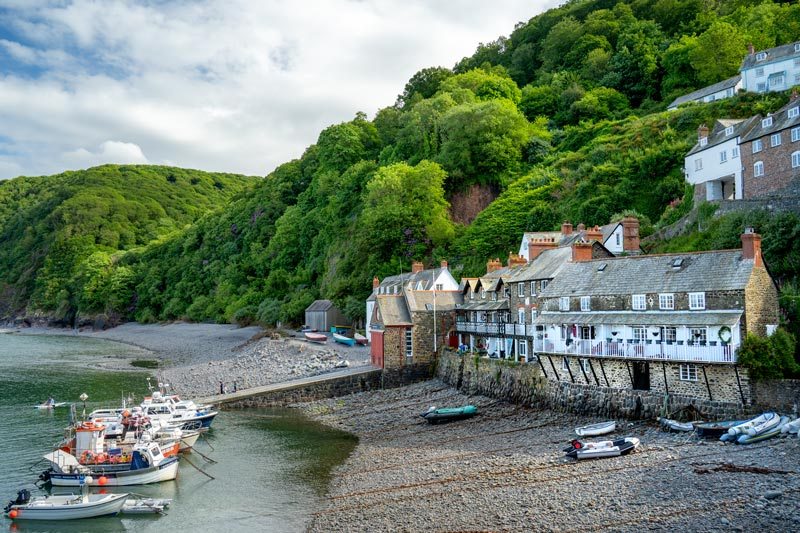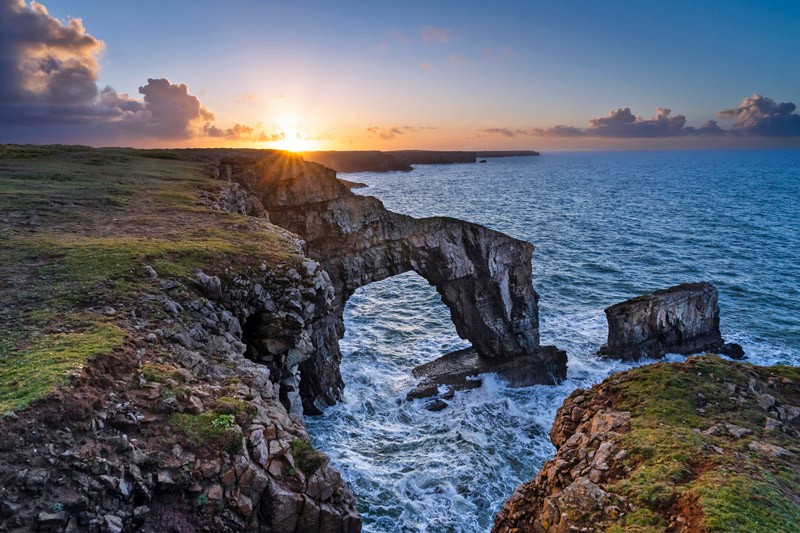I threw a picnic in our garden the other day. We were busy with all…
Why are the buildings of the Cotswolds so unique?
The Cotswolds are one of if not the most popular regions in England. No wonder, as its yellow limestone cottages, manor houses and churches blend in with the landscape perfectly creating a unique and romantic ambience. But why are we so enchanted by Cotswold villages and towns? In this post I am trying to find out what makes the houses of the Cotswolds so unique.
First of all what are the Cotswolds and where are they?
The Cotswolds are an area in England and are part of the limestone hills that rise from the coast of Dorset to the North East. The Cotwolds strech across six counties: Gloucestershire, Oxfordshire, Wiltshire, Somerset, Worcestershire and Warwickshire.
What does Cotswolds mean?
According to the most popular interpretation it means ‘sheep enclosure in rolling hillsides’.

Why are there so many cottages in the Cotswolds?
The wool industry has been present in this area for centuries and in the medieval times England became the leader of the industry when King Henry VIII increased the tax on exporting wool and merchants were forced to buy up locally-produced woollen cloth.
By the 17th and 18th centuries the wool industry was led by wealthy wool merchants who sent the raw wool to families who lived in local cottages. The wool was cleaned and spun in these tiny cottages. The wool industry flourished and more and more workforce were required. Many weavers moved to the Cotswolds and built their own cottages with the help of other families.
The majority of the Cotswolds cottages and houses appear to be older than they actually are. But the fact is, they were built between the 17th and early 19th century using local materials (limestone). With the spread of the railway, other building materials like bricks and timber became available.

Why are the buildings of the Cotswolds so unique?
The most characteristic element of these buildings is the ‘oolite’ which is a porous stone and comes in different shades. You would find a grey shade in Painswick, gold in Bibury and honey or rust colour in Broadway.
But that’s not all. The oldest cottages had only one room downstairs where steps or a ladder lead up to the bedroom. You can imagine how tight it must have been for families to live here with many children, equipment and raw materials…
Early cottages had thatched roofs but it fell from favour in the 16th century due to risk of fire. Instead of tiles, they used slates, which were put on the roofs like fish scales, meaning the smaller ones by the ridge, and the biggest ones at the bottom of the roof. Early roofs stretched beyond the walls to lead water away as guttering was not yet available. This is important as the limestone was not waterproof.
Gabled roofs were popular – the cottages in Arlington Row, Bibury where the weavers lived, or the cottages in Castle Combe but in other villages and towns as well.

Another distinctive feature of early cottages and houses were the mullion windows which were replaced by wooden casement windows in the Georgian period. The symmetry so typical for Georgian architecture also applied to the buildings of the countryside: cottages with a door in the middle and windows on both sides are probably from this era. The gabled roofs went out of fashion, too and the dormer window appeared.
Only in the 19th century did the cottages become larger: houses normally consisted of one and a half or two rooms downstairs and two rooms upstairs. Early Victorian cottages were built in narrow terraces, hence doors were offset. Porches became fashionable and barge boards are definitely Victorian ornamentations.
With the decline of the wool industry, many families struggled and every member of the family had to work. Sometimes even that was not enough to survive, so many left the Cotswolds and sought jobs elsewhere. Buildings and cottages were abandoned and stood empty.
It was only by the end of the 19th century when cottages were re-discovered. Many paintings showed an idealised rural past with cottages, cottage gardens and village scenes. Architects and artists turned their attention to the cottages which were looked down on, especially thatched cottages which were associated with poverty. The leader of the Arts and Crafts movement, William Morris bought Kelmscott manor which became his countryside retreat and often invited his friends there. Life returned to the Cotswolds which became the centre of the Arts and Crafts movement.

The colour of the windows and doors
What I always wonder about is the colour of the doors and window frames. I am not sure which colour I would go for as I find that all of them look great on the limestone buildings of the Cotswolds (grey, white, sage green, beige), however the traditional colour was green! White is a 20th century fashion apparently.
The cottage garden
Paintings depicting charming cottages often have beautiful flower gardens. In reality cottage gardens were more like allotments and fruit and vegetables, herbs and spices were grown here.
Romantic cottage gardens were born during the Arts and Crafts period when Gertrude Jekyll used her colour theory (harmony and contrast of colour), texture and form to harmonise plants. She used wild and traditional flowers.
If you are thinking of creating a typical cottage garden, you have to be careful as to what garden elements to use. Try to avoid sundials, sculptures etc as these were not elements of the garden originally. A dry stone wall or a wicket fence or gate is perfect as well as traditional flowers like honeysuckle, hollyhocks, pansy, sweet william, geranium, cowslip, lavender, primrose, lily of the valley.

Some Places to visit:
The most famous towns and villages of the Cotswolds are:
Chipping Campden
Chipping Norton
Bourton-on-the Water
Stow-on-the-Wold
Upper Slaughter
Lower Slaughter
Moreton-in-Marsh
Broadway
Snoswhill
Winchcombe
Bibury
Burford
Painswick
Lacock
Castle Combe
However, I would recommend going off the beaten path and explore other, less-known villages like:
Bourton-on-the-Hill
Batsford
Blockley
Erbington
Broad Campden
Kingham
Honington
Bretforton
Ashton-under-Hill
Wherever you go in the Cotswolds there will be something to delight.
How to get to the Cotswolds:
The perfect place to start your Cotswolds trip is probably from Oxford if you are visiting from London. You can get to Oxford by train from London Paddington and the journey takes an hour. However, there are several tour agents offering round trips in the Cotswolds even with London pick-up, so it might be worth checking some of them out.
Where to stay in the Cotswolds?
There are not many big hotel chains in the deepest parts of the Cotswolds. Bed and Breakfasts are more prevalent. We stayed at a lovely B&B in Bourton-on-the-Water which I cannot recommend enough. The hospitality is superb, the breakfast menu is fantastic and it is in a perfect location if you want to tour the Cotswolds.




Comments (0)